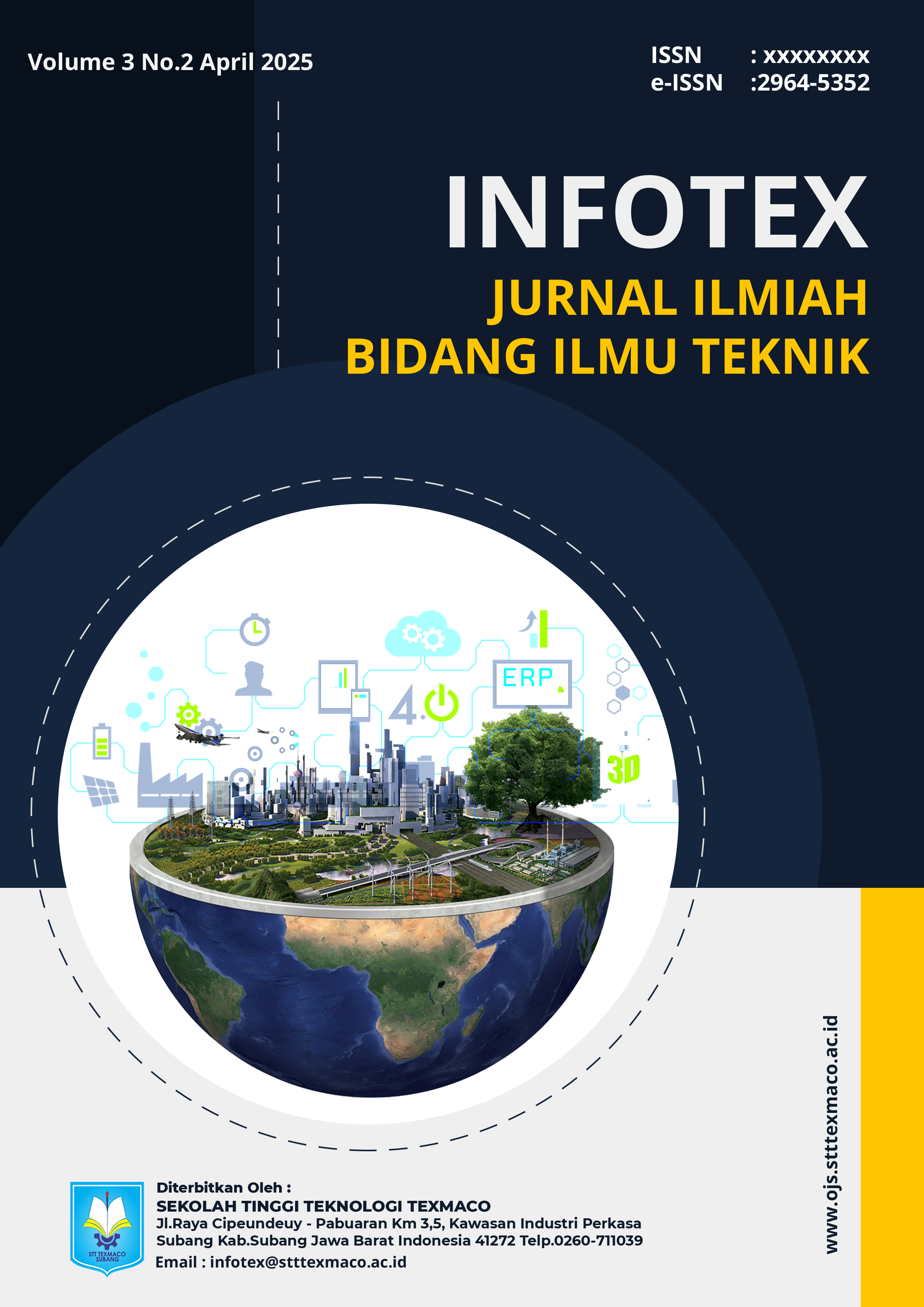Analisis Beban Kerja Pada Bagian Assembling Dengan Menggunakan Metode Work Load Analysis (WLA) Untuk Menentukan Jumlah Tenaga Kerja Yang Optimal Di Teaching Factory STT Texmaco Subang
Keywords:
Beban Kerja, Tenaga Kerja,Work Sampling, WLA, Assembling.Abstract
The performance and welfare of the workforce are greatly nfluenced by the workload, especially n the manufacturing ndustry. By using the workforce sampling method and workload analysis (WLA), this study aims to analyze the workload that shows the average productive time and determine the optimal number of employees n the Assembling line 2 section. This method allows ncluding work and dle to know the percentage of operator productive time (work), dle time (idle), and how much allowance s given to each operator. From the results of the Workload calculation with Workload Analysis, t can be concluded that the average percentage of productive time s 97.39% while for Assembling 1, and 6 have carried out their productive time optimally at 103.24% for Assembling 1, and 100.92% for Assembling 6. This has a negative mpact which results n accumulation n the Assembling operator, uneven workload f left continuously without any mprovement can have an mpact on employee productivity and quality. The number of operators n the company remains at 10 people (no need for additional operators) simply by conducting training or mplementing a better work system.
References
[1] N. D. Gardapati and S. rbayuni, “Pengaruh Beban Kerja dan Lingkungan Kerja terhadap Kinerja Karyawan PT Wiharta Karya Agung Gresik,” Ekonomis: Journal of Economics and Business, vol. 7, no. 1, p. 1, 2023, doi: 10.33087/ekonomis.v7i1.631.
[2] S. Wardah, “Penentuan Jumlah Karyawan Yang Optimal Pada Penanaman Lahan Kelapa Sawit Dengan Menggunakan Metode Work Load Analysis (Wla),” Jurnal Teknik ndustri: Jurnal Hasil Penelitian dan Karya lmiah dalam Bidang Teknik ndustri, vol. 3, no. 1, p. 46, 2017, doi: 10.24014/jti.v3i1.6150.
[3] Y. Fernanda and J. Hutabarat, “ANALISA BEBAN KERJA DENGAN PENDEKATAN WORKLOAD ANALYSIS ( WLA ) UNTUK MENENTUKAN,” vol. 6, no. 2, pp. 252–257, 2023.
[4] putri Kurniawati, “No Titleالابتزاز الإلكتروني.. جرائم تتغذى على طفرة «التواصل ال,” Universitas Nusantara PGRI Kediri, vol. 01, no. 2, pp. 1–7, 2017.
[5] R. P. Sari, W. Citra, and V. F. Sanjaya, “Pengaruh Beban Kerja Dan Gaji Terhadap Kinerja Pt Ciomas Adisatwa Lampung Selatan,” sari, vol. 2, no. 1, pp. 82–90, 2022, doi: 10.21274/sosebi.v2i1.5063.
[6] N. Afdy, M. Zakaria, and Syukriah, “Pengukuran Beban Kerja Dengan Menggunakan Metode Workload Analysis Untuk Menentukan Jumlah,” Jurnal Teknik, vol. 2, no. 1, pp. 811–821, 2019, [Online]. Available: https://snft2022.ft.unimal.ac.id/Tind/018-TIND.pdf
[7] Tridoyo and Sriyanto, “Analisis Beban Kerja dengan Metode Full Time Equivalent Untuk Mengoptimalkan Kinerja Karyawan,” ndustrial Engineering Online Journal, vol. 3, p. 8, 2014.
[8] H. Hermanto and W. Widiyarini, “Analisis Beban Kerja Dengan Metode Workload Analysis (WLA) Dalam Menentukan Jumlah Tenaga Kerja Optimal Di PT NDOJT,” Performa: Media lmiah Teknik ndustri, vol. 19, no. 2, pp. 247–256, 2020, doi: 10.20961/performa.19.2.46467.
Downloads
Published
How to Cite
Issue
Section
License
Copyright (c) 2025 Raden Mohamad Sugengriadi, Deni Ahmad Taufik, Rifa Rahmat Paoji

This work is licensed under a Creative Commons Attribution-ShareAlike 4.0 International License.






